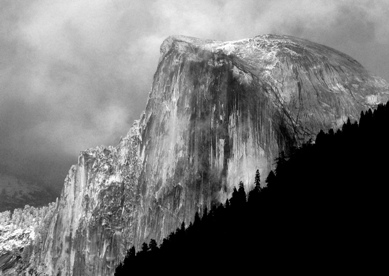Geology 165-California Geology 
Because of the Covid pandemic, this course is online only this year. Some links may be obsolete.
Syllabus & Documents
- Geology 165 Syllabus (pdf)
- Class Map Exercise (pdf)
- California's Geomorphic Provinces (California Geological Survey)
- Sample of class map exercise
- Practice Exam for Chapter 2 (pdf)
- Midterm Study Guide (pdf)
- Final Exam Study Hints (pdf)
What will you know when you finish this course? What new skills will you have? The following items are the Student Learning Outcomes (SLO’s) for California Geology. Upon successful completion of the course, you will be able to:
Distinguish the elements of the scientific method and discover how these principles apply to the study of California geology. All sciences share a common methodology of attaining knowledge that seeks to eliminate bias and prejudice in research. You will know the difference between a hypothesis and a theory (and it may very well not be what you think!).
The ability to use basic geologic principles and the examples of present-day geologic processes to explain geologic events of the past, as revealed by fossils and rocks. Many people are surprised that a geologist can look at a few rocks in a roadcut or mountainside and then immediately tell a complete story of how those rocks came about. In this class, you will learn to identify the basic rocks and minerals, and the set of principles that geologists use to tell the story of the rocks. You will have the ability to interpret the story in the rocks yourself, either in pictures and diagrams, or by visiting the localities yourself.
Reconstruct and summarize the major geologic events in the history of the California region and each of its provinces. You will be using your skills to figure out how California came into being. Different parts of California have different stories, from the volcanoes of the Cascades, to the granite peaks of the Sierra Nevada, to the ancient rocks of the Mojave Desert to the very strange and convoluted sediments of the Coast Ranges. Not to knock pop culture, but you will know more about California geology than literally any television or newspaper reporter. You will be criticizing and critiquing the news regularly, especially when they make mistakes about earthquakes and volcanoes.
Explain volcanism, faulting, stream and glacial erosion, mass-wasting, and other geologic processes active in California. California is one of the most diverse landscapes in the world: there are few places where you can start driving in a hot desert, go up and ski for a few hours, and then go to the beach to work on your tan. Almost every important geologic process has an example taking place in this state, and you will understand how they work.
Assess and criticize competing hypotheses regarding the origin and tectonic history of the different provinces of California. Geologists are still arguing about things going on in California. This is how science is meant to work, so we will be learning how controversies and arguments are settled in geologic research.
Analyze and assess geologic hazards that threaten inhabitants of California. Perhaps this is the most important objective in the class. No matter where you live, be it in California or anywhere else, geological processes can kill and injure people, cause property damage, and just make life miserable. You will know the chances of earthquakes, volcanic eruptions, landslides, and floods in given areas of the state, and how best to deal with such hazards.

